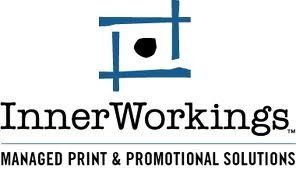Companies looking to green their operations often place reducing paper consumption and buying from sustainable sources near the top of their priority lists.
Recycling the paper that companies use is important, but many try to take their greening efforts further by analyzing how they can use less paper and buy products in a more eco-conscious way. InnerWorkings Inc., a Chicago-based outsourcer of print and print-related services, aims to help clients achieve those goals. Many businesses find they also can save money in the process.
When InnerWorkings takes charge of a company’s paper procurement process, it can offer greener paper choices. InnerWorkings has relationships with 8,000 suppliers to meet the paper needs of its 4,500 business customers. About 1,000 of those suppliers are certified either by the Forest Stewardship Council or the Sustainable Forestry Initiative, or both, says Ryan Cox, InnerWorkings’ director of strategic sourcing and supplier relations. He estimates about 170 of the top 200 most widely used suppliers on its roster are FSC or SFI certified.
In the last five years, Mr. Cox notes, more businesses each year have been seeking sustainable options for paper purchases. Those items include boxes and other packaging materials, as well as business cards, direct mail campaigns and promotional displays. InnerWorking’s clients include Fortune 500 companies, small businesses and sole proprietorships.
Offering a deep pool of eco-friendly products has given InnerWorkings its own boost. Annual revenues for 2010 are expected to be about $500 million and the publicly-traded company has posted annual sales growth of about 20% in recent years, except for relatively flat sales in 2009, during the darkest days of the recession, Mr. Cox says.
Crain’s met recently with Mr. Cox, 31, to discuss some of the best ways companies can green their paper supply chain and save a few bucks along the way.
Crain’s: What are some of the most wasteful paper practices among businesses?
Mr. Cox: Sometimes procurement departments are being wasteful when they’re buying from the supplier around the corner or from their buddy when those may not be the best choices.
Ryan Cox
Many products are made on equipment ill-suited to produce it. The creative people come up with ideas that sometimes don’t translate well on the production side. Once a company brings us in, our people are there at the creative concept and they can help redesign the equipment to reduce waste in their print manufacturing.
We also find a lot of companies are printing large quantities of paper goods, bringing it to a warehouse and putting it on a shelf that sometimes stays there forever until it’s thrown away. We consult with them to make sure they only print what they need.
What are some of the best strategies you deploy to help companies achieve their sustainability goals?
There’s two main ways we’re helping our customer go green. The first and foremost is our business model. It only exists to create efficiency, eliminate waste and minimize shipping. We identify the most efficient suppliers to produce those pieces. When we procure on a company’s behalf, they get this great environmental lift as a byproduct of what we do.
Then we can take the next step and partner with our customers’ goals with regard to FSC certification. We can identify environmentally friendly substrates and inks and we can institute a variety of other sustainable business rules while we’re sourcing for them.
Why are some businesses reluctant to buy items made of recycled paper products or sustainable in other ways?
Many people think if you use recycled stock it will cost more money and that’s not necessarily the case. Manufacturers that use FSC-certified paper don’t always carry with it a robust cost increase. These forests have been sustainably maintained for generations, we’re just monitoring it now and getting them certified.
How can you be sure your suppliers that are supposed to follow sustainable practices are in fact doing that?
We audit our suppliers, but we can’t say all the magenta that goes into the fountains of a certain product is soy-based every single time. But we monitor the trades (magazines) and newswires to make sure there aren’t any hiccups.
The FSC certification process is new for lots of suppliers so some may be not as well-versed in the strict rules of printing, but we haven’t seen any egregious acts. The print community is as committed to sustainability as their customers are. They know degradation of public opinion will only hurt their business.



